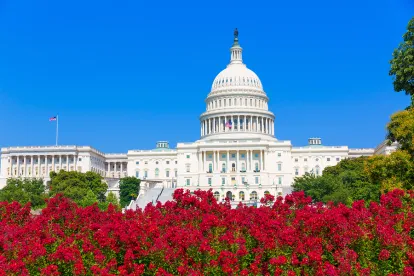On Monday, December 21, Congress unveiled the nearly 5,600-page text of the latest COVID-19 relief package. If signed into law by the President, the omnibus spending and stimulus relief package will provide direct cash payments to many adults in the U.S., extend unemployment benefits, reopen the Paycheck Protection Program, and provide wide-ranging rental and educational assistance to those impacted by the pandemic.
Buried among the lengthy bill is language related to the paid sick and family leave program introduced as part of the Families First Coronavirus Response Act (FFCRA). The FFCRA, which went into effect April 1, 2020, provides up to 80 hours of emergency paid sick leave, and up to 12 weeks of partially paid emergency family leave, to employees of certain employers who are unable to work due to COVID-19-related reasons. The FFCRA imposed a first-ever temporary paid federal leave requirement, but offset the burden on private employers by providing a dollar-for-dollar offset from payroll taxes for paid leave wages paid to employees taking FFCRA leave.
The FFCRA expires by its own terms on December 31, 2020, but Section 286 of the stimulus bill extends the payroll tax credit for paid sick leave and paid family leave through and until March 31, 2021. However, the stimulus bill is silent with respect to extending the FFCRA leave framework itself. Based on this, although employers will not be required to provide employees with paid sick or family leave after December 31, 2020, if they choose to allow employees to take leave for a COVID-19 related reason under the FFCRA framework between January 1 and March 31, 2021, they may still claim the payroll tax credit.
As written, the stimulus bill raises more questions about the status of the FFCRA than it answers. On the one hand, it extends tax relief to private employers, in theory incentivizing their continued provision of time off to employees impacted by COVID-19 through March 31, 2021; however, if an employer does not have to provide paid time off at all, the tax offset is little motivation for doing so and it is no incentive at all for public employers, as they were never entitled to claim an offset for providing paid leave. Further, as the FFCRA still expires on December 31, 2020, if an employee were to take time off between January 1 and March 31, 2021, he or she would not be eligible for the job restoration protection available under the Act. It also appears clear that the extension of the tax credit provision does not create a new allotment of paid time off for employees who already have exhausted their 80 hours of emergency paid sick leave and/or 12 weeks of emergency family leave, nor would it allow an employer to claim a second payroll tax credit should it provide additional time off to an employee who has exhausted his or her leave allotment.
Assuming the law goes into effect in its current form, private employers with fewer than 500 employees have the discretion to permit additional time off and to benefit from the tax offset for the financial burden through March 31, without the accompanying responsibility to ensure job restoration at the conclusion of the employee’s time off. It provides some additional incentive to covered private employers to be flexible with paid time off requests as the pandemic continues, but without imposing additional obligations on them. Should the President veto the law or the tax credit language be modified, we will update the blog accordingly.




 />i
/>i

